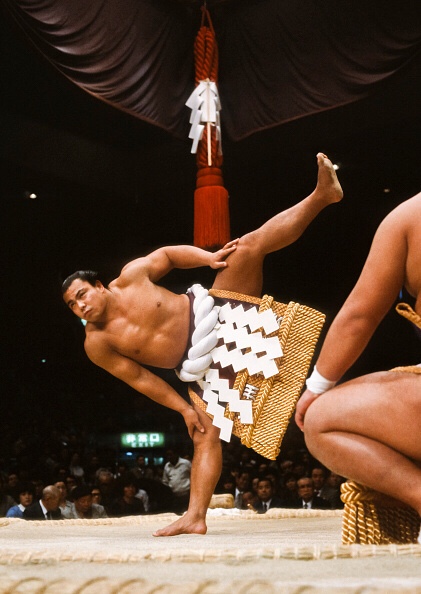Many people don’t understand sumo, in the same way they don’t understand wrestling, judo, or Jiu-Jitsu. The martial art of grappling is a mystery to many people probably because it exists as a subculture and many people don’t ever get a chance to give these sports a try. The untrained eye just doesn’t understand the intricacy and complexity. However, there are unique individuals, peak performers, that always manage to defy those that are unfamiliar and amaze the crowd with their persuasive movement.
Chio-no-fuji is a one of a kind sumo grand champion that personifies strength as the combination of technique and timing. Although he was almost always the smaller of the two wrestlers standing on the dohyo stage, he managed to move his body in a way that worked for him. Smaller in his case had nothing to do with strength. In fact, many wrestlers who experienced the strength of Chio-no-fuji would say he felt very heavy.
How could it be possible that someone 50kg (110 lb) or 100kg (220 lb) larger than Chio-no-fuji, perceive their opponent to be heavier? The only reasonable explanation, technical prowess.
Not just good technique but technique that matched his characteristics both mentally and physically. Chio-no-fuji fought to his personality, forward moving and never backing down. Known for his intense and relentless training style, his fights were a reflection of just that. Interestingly, his style didn’t blossom until after he suffered from shoulder dislocations. The injury forced him to change his style of fight, along with a regimented strength training program to prevent the injury. Some say he would have never been as great had it not been for the injury. In his career he went on to receive the National Hero Award, win 53 consecutive bouts, and 31 overall tournaments. 
Chio-no-fuji’s accomplishments are not only a reflection of his physical might but also his relentlessness to study his opponents. If he lost a bout, he would do everything possible to study and learn the skills of his opponent. He even broke from traditional norms, going outside his house of training to train against opponents that beat him. This practice of de-keiko, was risky because it also gave his opponents an opportunity to study him as well.
Watching Chio-no-fuji, I realized he was a representation of Sumo-do. A way of living, a lifestyle, defined by sumo. As a result, his charisma and personality was reflected in his matches. Peak performers like Chio-no-fuji understand themselves, understand their art, and as a result give others an opportunity to understand the unique and somewhat intangible.